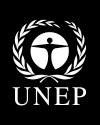Description
This report presents the findings of the Post-Conflict Environmental Assessment of Sudan and provides detailed recommendations for follow-up action. The sectors investigated include natural disasters and desertification, linkages between conflict and environment, the impacts of population displacement, urban environment and environmental health, industry, agriculture, forest resources, freshwater resources, wildlife and protected areas, marine environments, environmental governance and international aid.
Despite of the peace agreement signed in January 2005 and a fast-growing economy, Sudan faces a number of challenges. Among these are critical environmental issues, including land degradation, deforestation and the impacts of climate change, that threaten the Sudanese people’s prospects for long-term peace, food security and sustainable development. In addition, complex but clear linkages exist between environmental problems and the ongoing conflict in Darfur, as well as other historical and current conflicts in Sudan.
This report demonstrates how environmental issues continue to be contributing causes of conflict. Competition over oil and gas reserves, Nile waters and timber, as well as land use issues related to agricultural land, are important causative factors in the instigation and perpetuation of conflict in Sudan. Confrontations over rangeland and rain-fed agricultural land in the drier parts of the country are a particularly striking manifestation of the connection between natural resource scarcity and violent conflict. In all cases, however, environmental factors are intertwined with a range of other social, political and economic issues.
UNEP’s analysis indicates that there is a very strong link between land degradation, desertification and conflict in Darfur. Northern Darfur – where exponential population growth and related environmental stress have created the conditions for conflicts to be triggered and sustained by political, tribal or ethnic differences – can be considered a tragic example of the social breakdown that can result from ecological collapse. Long-term peace in the region will not be possible unless these underlying and closely linked environmental and livelihood issues are resolved.
Information
- Author(s)
- United Nations Environment Programme (UNEP)
- Publisher
- United Nations Environment Programme (UNEP)
- Place published
- Nairobi, Kenya
- Date / journal vol no.
- June 2007
- Pages
- 354


